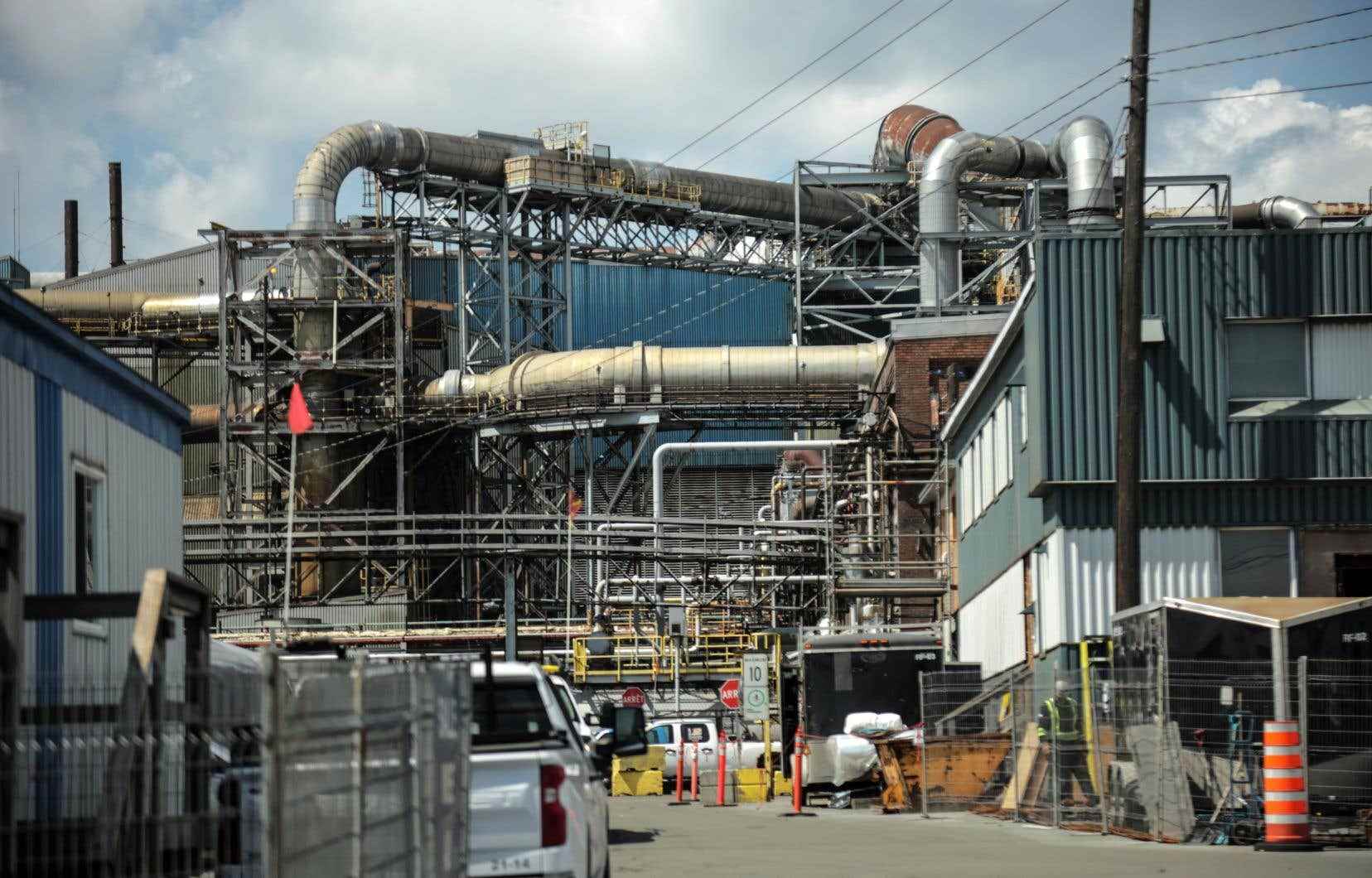The Horne smelter promises to submit within “a few weeks” a “major” action plan to reduce arsenic emissions. Despite some denial of details, The duty was able to talk to two people responsible for the “modernization” of one of the biggest polluters in the country: Marie-Élise Viger, first person in charge of the environment, and Donald Piché, director of engineering and technical services at Glencore in North America.
The gigantic pipes that wind over the majority of the metallurgical complex filter more than 95% of the foundry’s toxic gases, explains Donald Piché. “100% purification does not exist: the system has a limit. If you want to get even more, you have to eliminate at the source. This maze of tubes also absorbs most of the plant’s expenses, notes her colleague.
The smelter itself, where the ore is smelted to extract the copper, is only in a very small part of the plant. Glencore engineers promise to refine the process by “at least halving” processing time. “Instead of having seven vessels in operation, we will have three vessels”, specifies Donald Piché.
“In the world, the conventional approach is that we add purification equipment [de filtration]. The approach that we have chosen to technically seek maximum gain is to combine the approach of purification […] with the reduction of the value chain with a process developed here. We go beyond the best available technologies. »
The end of this “major” project was scheduled for 2024 in the company’s last action plan, dated 2020. Its “completion” is now scheduled for 2026.
To those who are urging the foundry to step up the pace, Donald Piché reminds us that this project, named PHENIX, began several years ago. “These major transformations take place in stages,” delays the engineer.
The cost of this improvement is $200 million. Glencore posted a net profit for its shareholders of $5 billion last year.
This update will be “one of the big chunks” presented shortly by Glencore. But nothing filters on the content of the rest of the ads.
Experts consulted by The duty mention that so-called “hydrometallurgical pre-treatment” processes exist in other mining complexes and could be applied to the Horne smelter. This process extracts the arsenic before melting with a liquid compound that is filtered, thus preventing these toxic metals from volatilizing into the air that citizens breathe. However, its profitability has not been demonstrated.
Curb emissions
The shrinking of the melting time will not prevent the foundry from emitting contaminants. The stale air in Rouyn-Noranda comes largely from “fugitive emissions” that bypass the “hoods” and escape from the walls of sometimes century-old buildings.
The new segment of the foundry will be built in a new leak-proof building, assures Marie-Élise Viger. “It will be completely closed and connected to a filtration system. In other words, the engineers plan to “encapsulate the entire foundry” to prevent the escape of toxic emissions.
The demolition of old buildings will also “improve the aesthetics” of the complex, adds Donald Piché.
The foundry also insists on saying that it multiplies the ways of preventing toxic dust from leaving the foundry. The asphalting of the ground, the installation of “windbreak barriers” and a more airtight storage should in theory limit the spread of the hated particles.
The recycling angle
The Horne smelter has not been a mine for several years. Instead, it melts mining and electronic waste to remove the coveted elements.
These “concentrates” of raw ore come from “different mines all over North America”. And when they are rich in pollutants, the foundry can demand a hefty price from its suppliers because of the emissions generated by the treatment. Environmentalist organizations plead for the foundry to obtain “inputs” that are less rich in contaminants.
Above all, the foundry hopes to increase its “recycling” portion of electronic products. For now, 80% of the precious or semi-precious metal sold comes from mining waste, while 20% comes from batteries, telephones, computers or other obsolete electronic components.
“We are adapting all operations to take more recyclable materials. With electric cars, batteries, we are part of this loop to increase our use of recyclable materials,” says Donald Piché.
daily standards
The liquefaction of mining waste releases tens of tons of arsenic into the air in Rouyn-Noranda each year. Reduced to a daily average, this pollution has repeatedly exceeded 1000 nanograms per cubic meter in recent years. The foundry defends itself by claiming to respect the “annual” standard of 100 ng/m3 granted to him by Quebec.
The imposition of a daily limit on polluting discharges is being considered by the Minister of the Environment, Benoit Charette, and it is well received by activists for the defense of the environment in Abitibi-Témiscamingue. However, no precise limit has been put forward.
Marie-Élise Viger says she wants to respect the government’s decision, whatever it may be. But “if we go from 100 ng/m3 [en moyenne] annually, at 100 ng/m3 on a daily basis, right now, with the technology we have and without improvement, no, it’s not realistic,” she warns.
This pollution ceiling is not impossible to impose, but it is still necessary that the financiers of Glencore find their account there. “It just has to be realistic according to the expected performance,” she says.
The imposition of emission caps for elements other than arsenic is also floating around. Could the Horne foundry tighten these standards in this way? It is answered that we will follow the requirements of the government.
